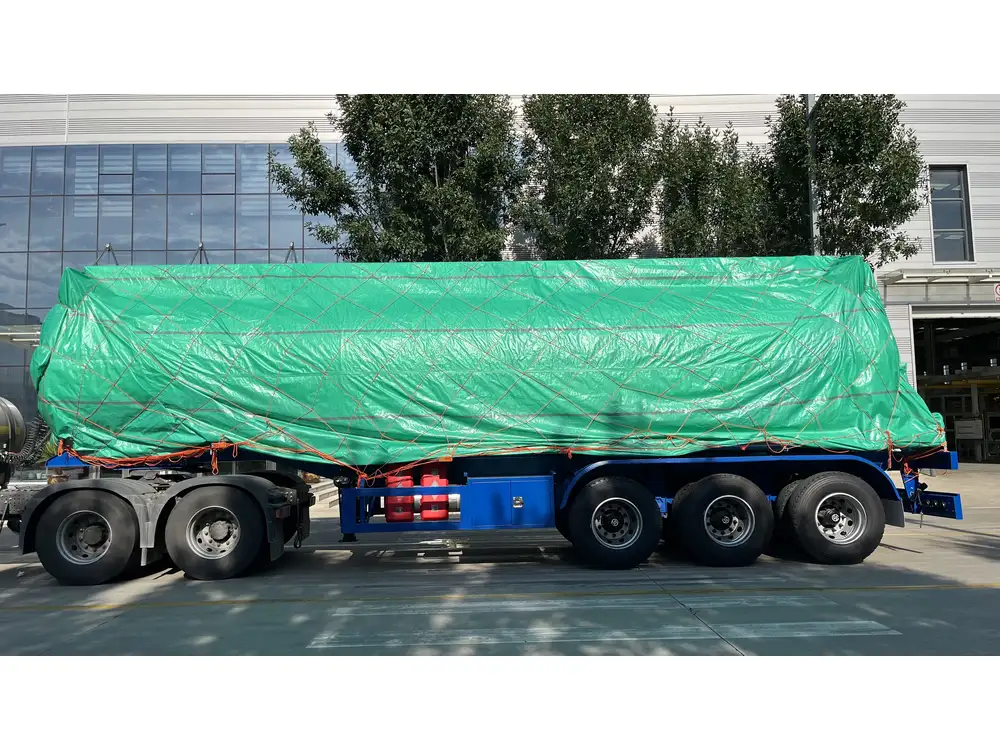Building a leaf box for a dump trailer is an incredibly practical endeavor that can enhance your trailer’s functionality, offering a dedicated area for transporting leaves, debris, and other loose materials. This guide will walk you through the detailed process of creating a robust leaf box that fits perfectly on your dump trailer while also addressing various factors that influence the design and construction.
Understanding Your Requirements
Choosing the Right Dimensions
Before embarking on the construction journey, it’s essential to assess the size of your dump trailer. Dump trailers vary in width, length, and height, and understanding these dimensions will allow you to build a leaf box that fits snugly. Generally, the ideal leaf box height ranges from 24 inches to 36 inches, while the width should align with the trailer’s internal width.

Material Selection
For a leaf box, the choice of materials is critical for durability and functionality. Below are some traditional materials along with their pros and cons:
| Material | Advantages | Disadvantages |
|---|---|---|
| Plywood | Affordable and lightweight | Can be susceptible to rot |
| Steel | Extremely durable and strong | Heavier and more expensive |
| Aluminum | Lightweight and corrosion-resistant | Typically more costly |
| Composite | Durable and resistant to moisture | Could have weight limitations |
Assessing the Trailer’s Load Capacity
It’s crucial to check the load capacity of your dump trailer. Overloading can lead to structural issues and safety hazards. Be sure to factor in the estimated weight of the leaf box along with its contents.
Tools Needed for Construction
Gathering the right tools will facilitate a smoother building process. Here is a list of essential tools you will need:
- Circular saw
- Drill/driver
- Measuring tape
- Level
- Welding equipment (if using steel or aluminum)
- Safety goggles and gloves
- Clamps
- Hinges (if designing a lid)

Step-by-Step Construction Process
Step 1: Measure and Cut Your Materials
- Begin by measuring the interior dimensions of your dump trailer.
- Based on the measurements, cut your selected material into the necessary panels:
- Two side panels
- One front panel
- One back panel
- One bottom panel
- Optional lid panel
Step 2: Assemble the Panels
- Assemble the side and back panels using clamps to hold them in place. Ensure the edges are aligned perfectly.
- Attach the bottom panel to the side panels first, followed by the back panel.
- Use wood screws for plywood, and bolts or welding for metal to secure the joins tightly.

Step 3: Reinforce the Structure
To prevent the leaf box from bending or collapsing under pressure, add reinforcements at the corners using brackets if applicable. This step is particularly critical if you opted for lighter materials like plywood.
Step 4: Attach the Leaf Box to the Dump Trailer
- Position the assembled leaf box onto the trailer bed.
- Secure the box using brackets or screws, ensuring it is stable during transportation.
Step 5: Create a Lid (Optional)
If you opt for a lid to protect the contents of your leaf box:
- Cut a panel that matches the top dimensions of the box.
- Attach hinges to one side, allowing the lid to swing open, facilitating easy access to the contents.

Step 6: Weatherproofing Your Leaf Box
If you choose plywood or any material that can be susceptible to the elements, consider weatherproofing as follows:
- Apply a coat of weather-resistant paint or sealant.
- Consider adding a tarp or cover for further protection against the elements.
Step 7: Test the Load Capacity
Before filling your leaf box with materials, it’s prudent to perform a test load with some weight to ensure its structural integrity. Gradually increase the weight to check for sagging or instability.
Maintenance Tips for Your Leaf Box
To ensure longevity and optimal performance of your leaf box, regular maintenance should not be overlooked:
- Regular Inspections: Frequently inspect for any loose screws or wear and tear. Tighten or replace screws as necessary.
- Cleaning: Remove debris that may accumulate. This can help prevent rot and maintain the box’s appearance.
- Weatherproofing: Touch up any areas that show signs of wear in your weatherproofing treatment.

Frequently Asked Questions (FAQs)
How Much Weight Can I Load into My Leaf Box?
The weight capacity depends significantly on the trailer’s ratings and the materials used to construct your leaf box. It’s crucial to refer to the manufacturer’s guidelines on towing and cargo loading limits.
Can I Build a Leaf Box with Recycled Materials?
Yes, using recycled materials can be a sustainable option. However, ensure that the materials you select are in good condition and structurally sound to avoid safety issues.

What is the Best Season to Build a Leaf Box?
Building a leaf box can be done any time of the year. However, early spring or fall might be ideal when you are most likely to need it, leading up to or right after the leaf-falling season.
How Do I Ensure My Leaf Box is Stable While Driving?
Proper installation to the dump trailer using sturdy screws and brackets will prevent instability while driving. Always check user weight limits and adjust load accordingly.
Conclusion
Crafting a leaf box for your dump trailer is a rewarding project that not only maximizes capacity but also adds convenience to your leaf collection efforts. With careful planning, the right materials, and the proper tools, you can construct a durable and efficient leaf box tailored to your needs. Regular maintenance and thoughtful construction choices will ensure your leaf box remains robust for many seasons to come.
This comprehensive guide is designed to offer you the insights and directions needed to make your project a success. By following these steps, you can confidently tackle your leaf box construction and improve your dump trailer’s utility dramatically. Embrace this opportunity to enhance your efficiency while engaging in yard work or landscaping projects. Happy building!



